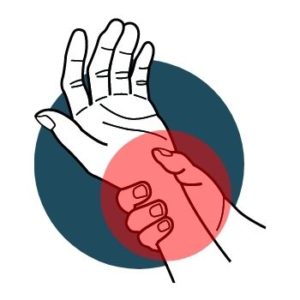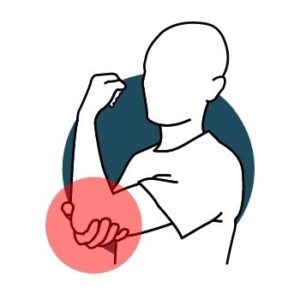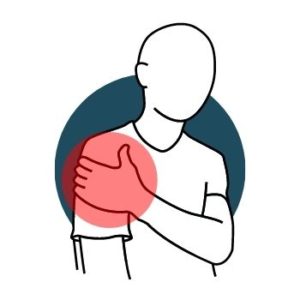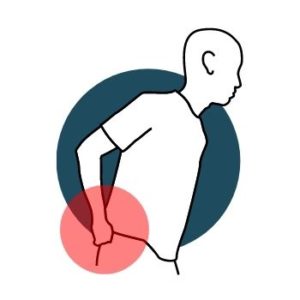As ultrasound technology progresses each year, one thing innovators increasingly turn their attention to is reducing strain on the sonographer. Things like cordless transducers, AI-enhanced sequencing and one-push controls have all been designed to improve the patient experience, but the primary beneficiary of these kinds of technological enhancements is you, the sonographer actually seeing the patient.
Yet even with the most ergonomic-friendly technology available, you’ll always be at a disadvantage if you don’t combine movement-friendly equipment with adjustments to your own habits.
You care about your patients. But who cares for you?
With that in mind, let’s look at some of the subtle changes you can make today to reduce strain and improve your long-term health. As a sonographer myself, I understand perfectly how bad habits can develop slowly over time, to the point where you don’t even realize when you’re undermining optimum movement. I’ve found that these tricks, when used in connection with the right ultrasound equipment, can really make a difference for joints and muscles, particularly the lower back and arms.
Intention
If you take nothing else from this article, I want you to remember the importance of intention.
The longer we remain in a job, the easier it is to passively go through the movements we’ve done hundreds, even thousands of times before.
You know a given ultrasound sequence like the back of your hand. You know precisely what the radiologist wants to see in the images, the process of acquiring them in the preferred order and how to conduct every single movement to achieve the expected outcome.
It’s this familiarity where bad habits can form. When you go through a given action hundreds of times, you’re not as attentive as you were to mechanics on the first few go-arounds. What you had to concentrate on becomes second nature… and you start to overlook how it impacts your form.
Professional athletes spend countless hours practicing their techniques so that, when game time arrives, their efforts look effortless. Their mechanics look perfect at the game, but even the top superstars spend time in practice going through even the most basic building blocks of their sport.
It’s all about intention, and it’s not only professional athletes who benefit from it. Think about when you first left sonography school. Your movements were perfect because you worked diligently to make them perfect. Your muscles were probably aching more than you ever imagined after the first couple times you lifted that transducer! You had to develop those muscles and your scanning movements through hours of training.
Now, removed from the training environment, your intentional technique has likely fallen by the wayside. And that’s why I encourage you to remind yourself of the basics once in a while.
Really think about your movements and determine if you’re acquiring images in the best, most comfortable manner. Look closely at where you’re moving your arms, where you position your feet, the height of your chair, etc. Could a few steps take the place of an overextended reach? Is bending your elbow to awkwardly reach an artery the best decision you could be making?
Be intentional. Visualize the movement and evaluate it with a critical eye. I think you’d be surprised about the small places in your scanning routine where you’ve let attention slip, and with just a few tiny changes, your body may feel remarkably better.
Extension
Intention goes arm in arm with extension.
I get it. You need to move the transducer across the patient’s torso, or access an organ from an angle that’s not ideal given your current position. But you also need to keep a finger on the console so you can capture the image. So what do you do? You extend your arm. No big deal, right?
Except those extensions really start to add up. At the end of the day, your muscles ache, and as you get older, the extensions take their toll even more.
The first step to minimizing extension is to remember what I told you about intention. When you think through your movements and consider what you’re doing, you can identify the situations where you extend your arms, legs and back unnecessarily and begin the work of correcting those movements.
Realize that inevitable extensions likely aren’t as inevitable as they appear. Although it may seem more convenient to stay in your chair and reach over to acquire a specific angle, the better choice is to move to the other side of the patient and capture the image from a more comfortable position. A few steps is way better than hyperextension.
If possible, bring the console with you so you’re not just extending your other arm. If this kind of console movement isn’t feasible, then consider having someone help you press the button necessary to acquire the image. And if that’s not possible, then this is where I point out that multiple systems available today actually automate the capture process so you don’t even have to press a button (or they let you press a node on the transducer to acquire the image).
Finally, make sure to get in as close as possible to the patient. You’re a sonographer, so I know you’re awesome at making friends. Scoot in close to keep your movements as centered around your core as possible, and then either adjust your chair or adjust the patient table so that you’re at the appropriate height to reduce strain.
Work It Out
During a long day of scanning patients, the last thing you want to hear is someone telling you to go out and exercise. But that’s exactly what you need to do.
Taking care of yourself outside the lab is critical, and regular exercise can help maintain those muscles that experience strain throughout the day. But what I really want to focus on are those tiny movements you can take, even in the middle of the day, that make a huge difference for your musculoskeletal structure.
You absolutely need to stretch the muscles you use on the job, particularly your arms. Take breaks every couple hours to lift your hands above your head, pull one arm with the opposing arm across your body, and conduct windmill movements to stay loose.
And definitely don’t forget your back. I’ve focused a lot on arm strain, but your back can sustain ongoing damage if you’re leaning out of your chair or over the patient too often. Try to keep your back as straight as possible during scanning (adjusting table height or moving your chair as needed), and then stretch regularly throughout the day. Bend down to touch your toes, bend to the sides to help out your core abdominal muscles, and even sit down on the floor and lean forward with your legs straight. All of these things will help protect your back from long-term damage.
Ready, Set, ErGo
These are just a few changes you can make to your own habits to improve your scanning technique and overall health. But I’d be remiss not to point out the innovations that have come to the ultrasound tech space in recent years.
Cordless transducers eliminate a portion of the scan that had previously been synonymous with overextension. Anti-fatigue mats can protect your feet if you find yourself standing during a majority of tests. Braces and elbow straps can reduce the weight of the transducer.
And, of course, there’s the ultrasound system itself. One-touch sequencing and AI-assisted capture are here, right now, and they can simultaneously speed up your workflow and protect your body. If you’ve been using a legacy system for the better part of a decade, I think you’d be amazed how sonographer-friendly some of these new machines really are.
If you have any additional questions about how to keep your body protected during ultrasound testing, or about new technology that’s available, don’t hesitate to reach out. I’d be happy to share more tricks and provide you with some insight into how to improve your workspace.
Reduce Injury With Proper Patient Positioning
Properly positioning the patient is the first place to start. The table should be raised to your elbow height. In patients with a higher BMI, it is more comfortable to have the table a little lower so you are not pushing upwards.
Whenever possible have the patient help you by moving closer on the bed to you. The more you can keep your scanning arm close to your body the less strain it will be. I found the biggest source of pain is when the patient is not far from me but forward from where I am. Meaning if my scanning arm has to reach out to the front and apply pressure it causes a significant shoulder pain. Move the bed down to be next to you or your machine more toward the patient’s head to minimize this forward pressure. Patient’s condition of being able to roll and not have you reach forward or sideways also will help minimize scanning injury.
Ready, Set, Stretch! Incorporate these stretches into your daily routing to help avoid injury.
Most Common Injuries in Sonographers
Wrist fatigue and pain
 Carpal tunnel and other hand injuries are common, which isn’t so surprising since we are gripping the ultrasound camera and pushing as hard as we can into patients. I sometimes find myself holding the camera like a toddler to get better pictures using a two finger hold for better fine motor movement. And sure enough it will hurt after. But gripping the probe with the fleshy part of your hand between the thumb and pointer finger and using that more muscular part to push can lower the pressure on your wrist and hand.
Carpal tunnel and other hand injuries are common, which isn’t so surprising since we are gripping the ultrasound camera and pushing as hard as we can into patients. I sometimes find myself holding the camera like a toddler to get better pictures using a two finger hold for better fine motor movement. And sure enough it will hurt after. But gripping the probe with the fleshy part of your hand between the thumb and pointer finger and using that more muscular part to push can lower the pressure on your wrist and hand.
Use all your fingers to hold the camera and relax the wrist. No lobster claw holds! It may also be tempting to twist your wrist into unnatural positions but the more natural you can hold it the better. That scanning hand is important so try and protect it as much as possible! A wrist brace may help hold the wrist and give an extra layer of support.
Elbow Strain
 As discussed earlier this can be a hinge point to press into your patients so correct height is important. Many sonographers suggest sitting while scanning and resting the elbow on an armrest to help support it. I find a cable strap attached to my forearm can hold the cord for the camera and reduce
As discussed earlier this can be a hinge point to press into your patients so correct height is important. Many sonographers suggest sitting while scanning and resting the elbow on an armrest to help support it. I find a cable strap attached to my forearm can hold the cord for the camera and reduce
torque and pressure coming from a dangling cord.
Shoulder pain
 This is usually where I am guilty of feeling pain. It’s difficult to not compensate for pressure from the shoulder. When in doubt, keep that arm in as close to your side as possible and don’t reach out laterally or forward. Sometimes I end up sitting on the bed with an immobile patient, so maybe bring an extra towel or sheet on portable exams to give yourself something to lean on. This is kind to your patient too who probably didn’t expect to see a sonographer laying in their bed that day!
This is usually where I am guilty of feeling pain. It’s difficult to not compensate for pressure from the shoulder. When in doubt, keep that arm in as close to your side as possible and don’t reach out laterally or forward. Sometimes I end up sitting on the bed with an immobile patient, so maybe bring an extra towel or sheet on portable exams to give yourself something to lean on. This is kind to your patient too who probably didn’t expect to see a sonographer laying in their bed that day!
Aching Back
 While scanning it may be tempting to lean to the side and have your back drape laterally, to get closer to your patient. It is best to think of all the bones in your spine and imagine stacking them one on top of the other. This will help other possible injuries to hips and legs as well.
While scanning it may be tempting to lean to the side and have your back drape laterally, to get closer to your patient. It is best to think of all the bones in your spine and imagine stacking them one on top of the other. This will help other possible injuries to hips and legs as well.
What has made the biggest difference to my pain levels has been assuming a proper scanning position and then after work going to exercise. A good stretch and muscle building routine will be vital to staying well for your career. Many sonographers also opt for monthly massages to help loosen those trouble
spots.
While scanning, check in with your body and don’t get so focused you don’t realize that something is getting stressed. If you feel pain, fix it! Take a quick break and stretch or move the muscle in a different way to loosen it. My favorite thing is taking a moment, shaking the gel bottle and then refocusing for another go. Change up your position or the patient’s to make things more comfortable.
In the end, we push ourselves to get the best picture possible and do the best for the patient diagnosis. Unfortunately, for some body habitus ultrasound is not the optimal choice for imaging and that’s not a the fault of a sonographers’ skill level. It could be gas or just inability to penetrate the tissues adequately. Do your best and try to see what is possible but don’t injure yourself for something that is impossible. Think of all the patients that won’t have a diagnosis if you are unable to scan. Take care of yourself and happy, healthy scanning!




